Filter by
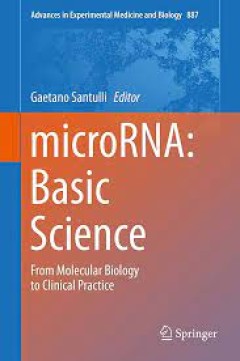
microRNA: Basic Science From Molecular Biology to Clinical Practice
This volume explores microRNA pathophysiology, focusing on basic concepts in molecular and cellular biology. Chapters contributed by leading scientists examine recently discovered pathways in several processes, including aging, diabetes, cardiovascular disease, hematopoiesis, and mitochondrial fitness. The authors contextualize microRNAs within epigenetics and micropeptidomics, angiongenesis an…
- Edition
- -
- ISBN/ISSN
- 978-3-319-22380-3
- Collation
- -
- Series Title
- -
- Call Number
- -
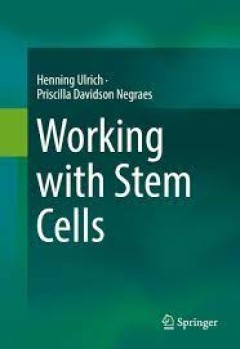
Working with Stem Cells
The content covered encompass not only the theoretic and methodological aspects for culturing human pluripotent stem cells, but also the establishment of induced pluripotent stem cells and their differentiation into specific cellular subtypes. This book has the most updated methods and technologies in an accessible and clear language, presenting protocols developed and optimized by researchers …
- Edition
- -
- ISBN/ISSN
- 978-3-319-30582-0
- Collation
- -
- Series Title
- -
- Call Number
- -
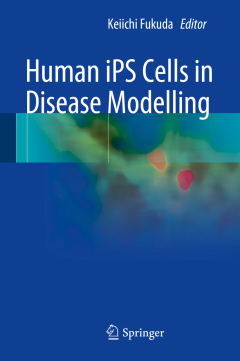
Human iPS Cells in Disease Modelling
Human iPS cells have a great potential to be cell sources for regenerative medicine because of the promise of infinite self-renewal and the capability to differentiate into multiple cell types. This book focuses on another great potential of human iPS cells, which is the establishment of human disease models using patient-specific iPS cells. Human iPS cells can be easily obtained from a patient…
- Edition
- -
- ISBN/ISSN
- 978-4-431-55964-1
- Collation
- VII, 99
- Series Title
- -
- Call Number
- 571.6 HUM

Fetal Stem Cells in Regenerative Medicine Principles and Translational Strat…
This book explores the regenerative properties of fetal stem cells, from feto-maternal cell traffic through perinatal stem cells, with a discussion of key topics including stem cell banking, drug screening, in utero stem cell transplantation and ethical considerations. The expertly authored chapters also delve into embryonic, amniotic membrane, and umbilical cord blood stem cells; fetal develop…
- Edition
- -
- ISBN/ISSN
- 978-1-4939-3483-6
- Collation
- XIX, 453
- Series Title
- -
- Call Number
- -
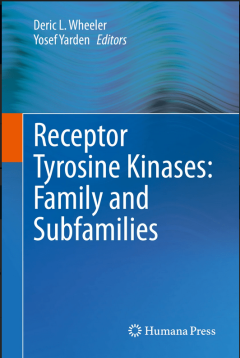
Receptor Tyrosine Kinases: Family and Subfamilies
This book devotes a chapter to each RTK family and the multiple receptors within each family, thoroughly covering all of the RTKs. The chapters all follow the same structure, presenting this essential information in an accessible and user-friendly format. Each chapter covers one specific family of receptors and begins with a general introduction to that family and a comprehensive discussion of …
- Edition
- -
- ISBN/ISSN
- 978-3-319-11888-8
- Collation
- -
- Series Title
- -
- Call Number
- 571.6

Receptor Tyrosine Kinases: Structure, Functions and Role in Human Disease
Receptor Tyrosine Kinase: Structure, Functions and Role in Human Disease, for the first time, systematically covers the shared structural and functional features of the RTK family. Receptor Tyrosine Kinases (RTKs) play critical roles in embryogenesis, normal physiology and several diseases. And over the last decade they have become the Number 1 targets of cancer drugs. To be able to conduct fun…
- Edition
- -
- ISBN/ISSN
- 978-1-4939-2053-2
- Collation
- -
- Series Title
- -
- Call Number
- 571.6
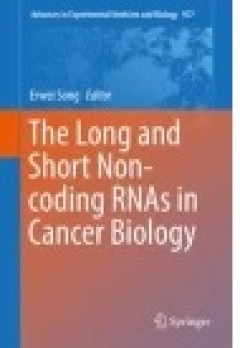
The Long and Short Non-coding RNAs in Cancer Biology
The book conveys a comprehensive knowledge of long and short ncRNAs in cancer regulation and their potentials as diagnostic biomarkers and therapeutic targets. Topics covered include the molecular mechanisms of various classes of ncRNAs (with emphasis on long non-coding RNAs and microRNAs) in cancer, the functional roles of ncRNAs in regulating different cancer hallmarks (including proliferatio…
- Edition
- -
- ISBN/ISSN
- 978-981-10-1498-7
- Collation
- VIII, 458
- Series Title
- Advances in Experimental Medicine and Biology
- Call Number
- -
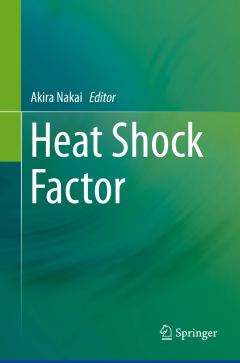
Heat Shock Factor
This book presents a large amount of information related to the heat shock response and heat shock factor (HSF), describes core observations about molecular mechanisms and pathophysiological roles, and provides fundamental concepts on the basis of information from diverse aspects. This adaptive response to high temperature or protein misfolding is a fundamental mechanism to maintain the capacit…
- Edition
- -
- ISBN/ISSN
- 978-4-431-55850-7
- Collation
- VIII, 301
- Series Title
- -
- Call Number
- 570 HEA
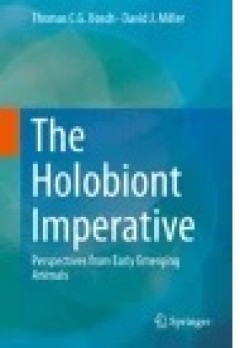
The Holobiont Imperative
This book examines how the growing knowledge of the huge range of animal-bacterial interactions, whether in shared ecosystems or intimate symbioses, is fundamentally altering our understanding of animal biology. Individuals from simple invertebrates to human are not solitary, homogenous entities but consist of complex communities of many species that likely evolved during a billion years of coe…
- Edition
- -
- ISBN/ISSN
- 978-3-7091-1896-2
- Collation
- X, 155
- Series Title
- -
- Call Number
- -
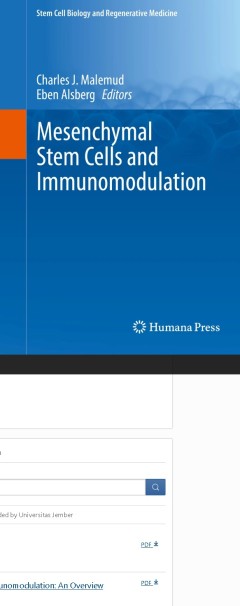
Mesenchymal Stem Cells and Immunomodulation
This essential volume explores mesenchymal stem cells (MSCs) and their potential to suppress immune-mediated inflammation. The chapters examine applications in autoimmune diseases such as lupus, rheumatoid arthritis and multiple sclerosis; blood cancers such as leukemia and lymphoma; and reproductive complications, specifically pre-term labor and use of MSCs in vitro and in animal models to dis…
- Edition
- 1
- ISBN/ISSN
- 978-3-319-46731-3
- Collation
- XI, 85
- Series Title
- Stem Cell Biology and Regenerative Medicine
- Call Number
- -
 Computer Science, Information & General Works
Computer Science, Information & General Works  Philosophy & Psychology
Philosophy & Psychology  Religion
Religion  Social Sciences
Social Sciences  Language
Language  Pure Science
Pure Science  Applied Sciences
Applied Sciences  Art & Recreation
Art & Recreation  Literature
Literature  History & Geography
History & Geography